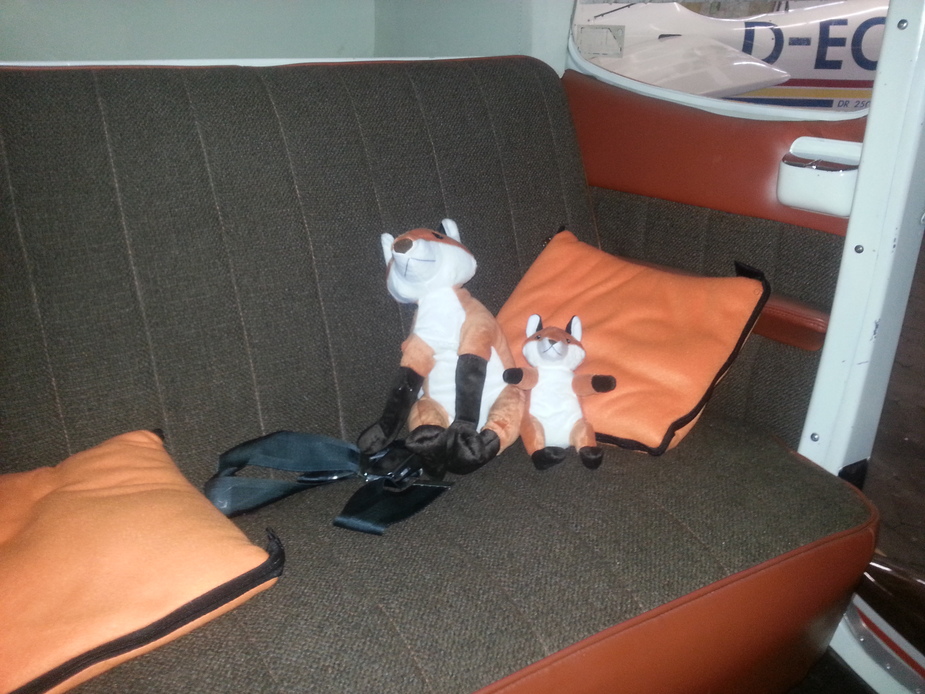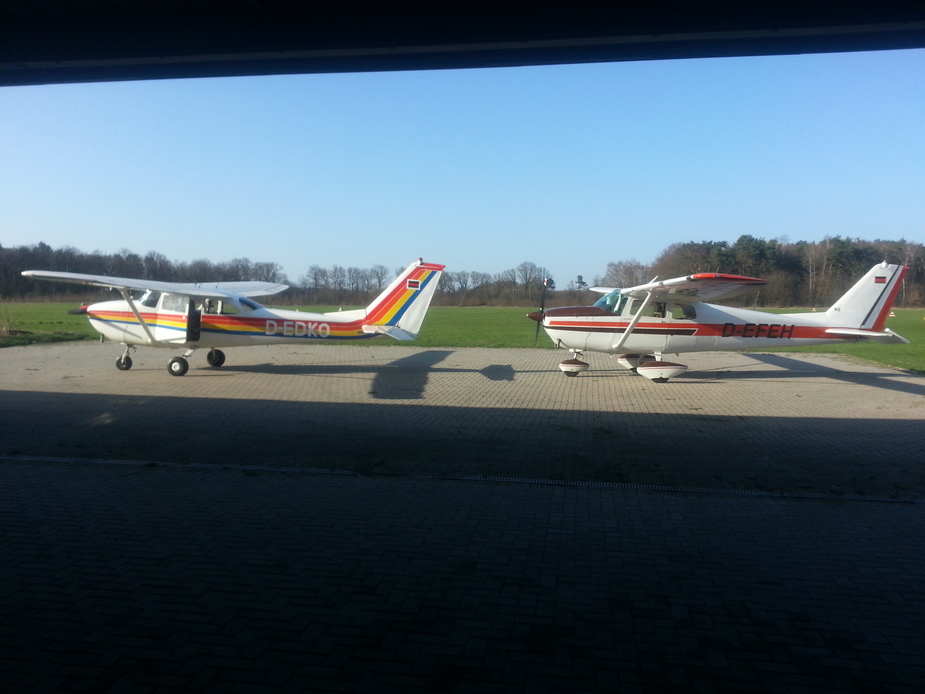Jacko wrote:
Robert,
You might widen your search to include a C175/Skylark, which can often be had for peanuts. Many have reverted to O-300 Continental or upgraded to an O-360 Lycoming
Was that the one with the reputedly unreliable geared engine?
C175s have the GO-300 geared engine. I’ve seen a couple of them converted into ‘mini C180s’ with a tailwheel conversion and an O-360. It must make a pretty practical plane for unimproved airfields. The square tail looks more like a C180 than a C170, which appeals to some.
My choice of going down this road (more or less) would be a very early fast back C182, preferably with an original paint scheme and interior, only the panel updated. However I think I get the idea here: given that early C182s are relatively expensive, a C172 or 175, with an engine upgrade when an overhaul is required over time, might be a good option. Especially given the lower fuel burn of the 172’s smaller engine. I’d stick with a fastback myself, they’re faster given the same power, much better looking, lighter, reputedly better handling and certainly nicer in construction… Beautiful aluminum (versus plastic) wing root fairings and tips, that sort of thing.
I think an entirely original early six cylinder C172 is a remarkably smooth, pleasant device, so whatever I did I’d be asking myself “is this really going to make it better than Cessna made it?” and proceeding carefully. Just my opinion, as somebody who typically cringes when seeing the ‘resto-mod’ concept applied poorly to any kind of vehicle. YMMV.
Good suggestions but the re engined 175 Skylark are not that cheap or plentiful. The TW conversion looks like a clever way to get a light weight C-180, and a good owner pilot option.
If I go down this route the 172 would be used to earn money in the rental market. There does seem to be demand for tidy, simple 172, and the Reims E seems to be a sweet spot in terms of value for money. The ungeared C-145 300-D has an 1800 TBO, some people love them, others prefer the Lycoming. They do cost more to overhaul, but are slightly more fuel efficient.
The Johnson bar flaps to 40 degrees, while preferable for an owner pilot, may need to be restricted to 30 degrees or else a thorough check out on balked landing technique might be required.
RobertL18C wrote:
The ungeared C-145 300-D has an 1800 TBO, some people love them, others prefer the Lycoming. They do cost more to overhaul, but are slightly more fuel efficient.
I think if the O-300 uses less fuel, it’s because it makes less power in the real world, with the propeller installed  The six cylinder engine is wonderfully smooth though in comparison with a four cylinder Lycoming. IIRC the main reason they transitioned to the Lycoming is because they’d ordered a lot of O-320s for the original Cardinal and when that plane proved to need more power, and was less popular than expected as a 172 replacement, they had to use the Lycoming engines somewhere. It didn’t hurt that the Lycoming is lighter, especially with the rest of the plane getting heavier as time went on.
The six cylinder engine is wonderfully smooth though in comparison with a four cylinder Lycoming. IIRC the main reason they transitioned to the Lycoming is because they’d ordered a lot of O-320s for the original Cardinal and when that plane proved to need more power, and was less popular than expected as a 172 replacement, they had to use the Lycoming engines somewhere. It didn’t hurt that the Lycoming is lighter, especially with the rest of the plane getting heavier as time went on.
There’s one more use for an O-300, at least in the RR version / installation: ice maker. I’ve only got a few hours flying behind this engine, but I had more carb ice in this one than in all my other flying combined. And that was in southern Spain….
We have updated out 172b a couple of years ago. Here is the panel.

The 172b has these three stack options, so you can install a lot of boxes.
I wouldn’t install the aspen, the C172 isn’t a hard IFR tourer, so the net benefit over conventional gyros seems marginal and you need avionics to feed the system. For the money drawn up by this you could install a nice GNS530 or similar. If you want to rent out for a broader spectrum of pilots, I’d go with a TY91/TT21 combination, perhaps a cheap IFR GPS (something along the line of a 155XL), a KN53 VOR/GS and a KN62 DME and you’d be ready for light IFR. If you update the panel, don’t forget to add a panel-mount PTT for the co-pilot. Iy you share work in the cockpit, or if you do flight training, it is wonderful to be able to make radio calls without the necessity to grab the yoke as non-flying pilot.
The O-300 is a very smooth engine and is sufficient to power the early 172s. Our fastback does easy 105KTAS with some power or 95KIAS in 2500ft and 2300 RPM at around ISA sipping way below 30 liter Mogas (I usually don’t run the engines on that low power, but should be 27-18-ish liters). You can do a real steep approach with 40°flaps, 57mph V_ref and be stopped well within 200 Meters. The 172b has a bit smaller fuselage than the omni-vidion models and have an MTOM of just 998kg, in Germany you stay within “below 1-ton-fee” margin operative at many airports. Empty weight is 641 kg, so the 1961 model has around the same useful load as the 160-horsed P-Models.

The 40° flap is a no-brainer in real life and the manual flaps do help to be aware of the exact flap position, as the first electric flaps have no preselect. So many pilots are not that aware of the actual flap position. It is more along the line of “Flaps 10….ish” or “Flaps 30….ish” and you only know if extended completely of have them fully retracted. No big deal in real life, though. (Our Aero-Club bas a F172F for initial flight training.) Our 172b and the 172d of a friend and the 172f of our club are all capable of maintaining altitude with full flaps, although you need to fly the correct speeds. But retraction to 10° or 20° is always possible really fast without plunging down.
The back seats of the fastback are comfortably and the hat rack above the baggage compartment has some advantages.

The early models have the straight NACA2412 airfoil and break a little more defined in a stall (while still being very benign and tame), than with the enlarged nose radius of the “chamber lift wing” on later 172s. Those handle much more “sluggish” and indirect up to complete boring flight characteristics of recent 172SPs. They are not handling as direct as typical European light aircraft (Robins, Moranes, Bölkows, The Sperling are all much more direct and more “pilot’s aircraft”) but quite nice (or a tad more exciting than a PA-18) and you know why Cessna has sold so much of them: They are the optimised mediocrity of light aviation, very well balanced.

172driver wrote:
There’s one more use for an O-300, at least in the RR version / installation: ice maker. I’ve only got a few hours flying behind this engine, but I had more carb ice in this one than in all my other flying combined. And that was in southern Spain….
I can’t say that I have had more carb icing in O-300s than in O320s or O200s.
mh what a great pirep and your 172B is brilliant, looking faster and younger than the omani vision next to it.
Even its shadow looks better 
As the intention is to lease the 172 my market research suggests that while the early Cessnas seem very attractive for the owner pilot, they are unlikely to earn a living, although there is one straight tail 172 which seems to have been a good investment for the last owner as he seems to have got 1,500 hours in rental income for it after he bought it. If he gets his asking price, I expect he made some money out of his ten years ownership.
If you do not have your own ATO/Club/Engineering outfit where the early Cessna might be kept for hour building packages, then the economics don’t stack up.
Also while the owner pilot might appreciate the smoothness of the -300 six cylinder Continental, it does have two more cylinders to feed which on a 300 hour p.a. utilisation may result in extra maintenance, and the OH cost is higher than for your standard -320 Lycoming.
So the hunt is back to that stalwart of the Flying Club scene, the 172 M, although a good condition K/L might also fit the bill. The R/S/SP have not really arrived in force – in part because they tend to be high timers from the zero to hero factories in the USA, in part because they don’t quite achieve the premium in the club rental market which reflects their capital value, and depreciation.
This blog is quite informative in terms of taking a 172SP from the USA to Australia.